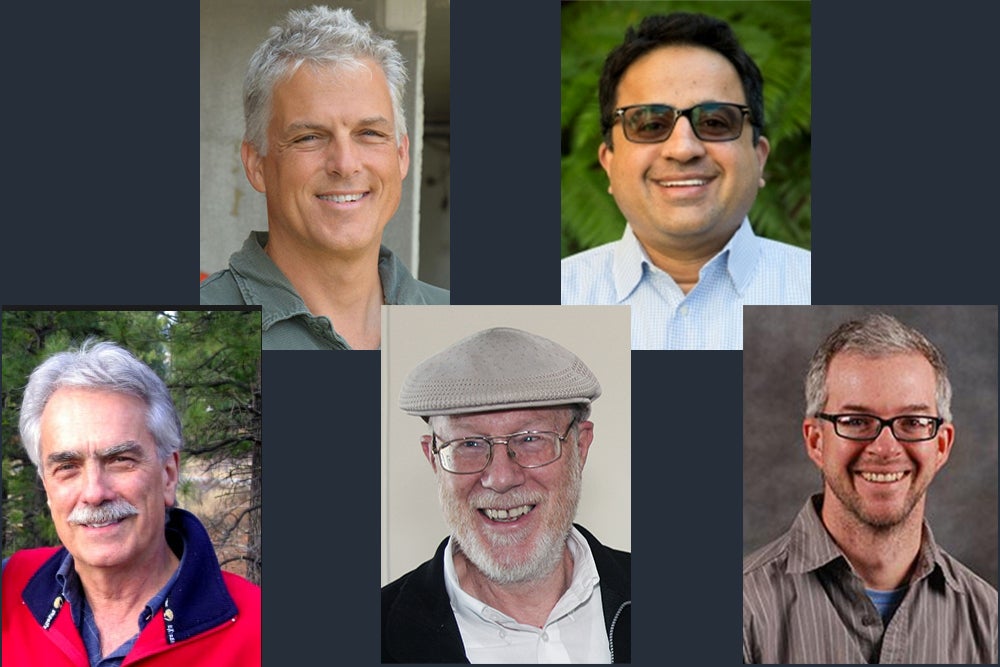
Research Pioneers
Five UC Santa Barbara professors join the ranks as Fellows of the American Association for the Advancement of Science (AAAS) for 2018. Election as an AAAS Fellow is an honor bestowed upon AAAS members by their peers for “their efforts toward advancing science applications that are deemed scientifically or socially distinguished.”
“I am thrilled to join together with our campus community in congratulating our five colleagues on their election to the prestigious American Association for the Advancement of Science,” said UC Santa Barbara Chancellor Henry T. Yang. “This proud recognition by one’s own peers is a testament to our honorees’ frontier research and strong leadership, and their distinction within their respective fields.”
Joining 411 other new AAAS fellows from universities, laboratories and research institutions across the country for 2018 are:
Craig A. Carlson — “For distinguished contributions in the field of microbial oceanography, particularly for advancing our understanding of the roles of oceanic dissolved organic matter in microbial dynamics and the global carbon cycle.”
A professor in the Department of Ecology, Evolution and Marine Biology (EEMB), Carlson focuses his research on somewhat still mysterious physical processes that connect microbes and dissolved organic matter in the ocean. He joined the UCSB faculty in 2001, currently serves as vice chair of the Interdepartmental Graduate Program in Marine Science and also is a member of the campus’s Marine Science Institute.
Ram Seshadri — “For distinguished contributions to the domain of structure-property relations in crystalline inorganic materials, particularly associated with developing predictive understanding of polar, magnetic and luminescent materials.”
Seshadri has been a professor in UC Santa Barbara’s departments of chemistry and biochemistry and materials since 2008. The Fred and Linda R. Wudl Professor of Materials Science and director of the Materials Research Laboratory, his research centers on compositional control of structure-property relations in complex functional inorganic materials and enlarging the toolkit of techniques that enable such control.
Bruce P. Luyendyk — “For pioneering work on vertical-axis crustal rotations within the Pacific-North American plate boundary, and on the tectonic history of Antarctica.”
Luyendyk, now a professor emeritus of marine geophysics, has concentrated his research on geologic processes in rather remote places, such as ocean basins, tectonic plates and Antarctica, where a mountain summit has been named in honor of his decades of work in the area. He joined the UC Santa Barbara faculty in 1973, and in addition to his research he also became the founding director of the Institute for Crustal Studies (now the Earth Research Institute) and served as chair of the Department of Geological Sciences and as associate dean of the Division of Mathematical, Life and Physical Sciences.
Oran R. Young — “For important contributions to the study of environmental governance, with special attention to issues relating to climate change, marine systems and the polar regions.”
A Distinguished Professor Emeritus in the Bren School of Environmental Science & Management, Young is a renowned Arctic expert and a world leader in the fields of international governance and environmental institutions. His scientific work encompasses both basic and applied research, with the former focusing on collective choice and social institutions, and the latter on issues pertaining to international environmental governance and the Arctic as a region. He is a co-director of the Bren School’s Program on Governance for Sustainable Development.
Trevor W. Hayton — “For creative contributions to the synthesis of actinides, lanthanide and transition metals complexes and nanoclusters.”
Hayton joined the Department of Chemistry and Biochemistry in 2006. His research aims to address a wide range of problems in energy science, nanochemistry and nuclear fuel clean-up through the synthesis and study of transition metal, lanthanide and actinide complexes as well as metal nanoclusters.
Each new AAAS Fellow will be presented with an official certificate and a gold and blue rosette pin at the AAAS Fellows Forum on February 16 during the 2019 AAAS Annual Meeting in Washington, D.C.
Founded in 1848, the American Association for the Advancement of Science is the world’s largest general scientific society. AAAS includes nearly 250 affiliated societies and academies of sciences, serving 10 million individuals.



